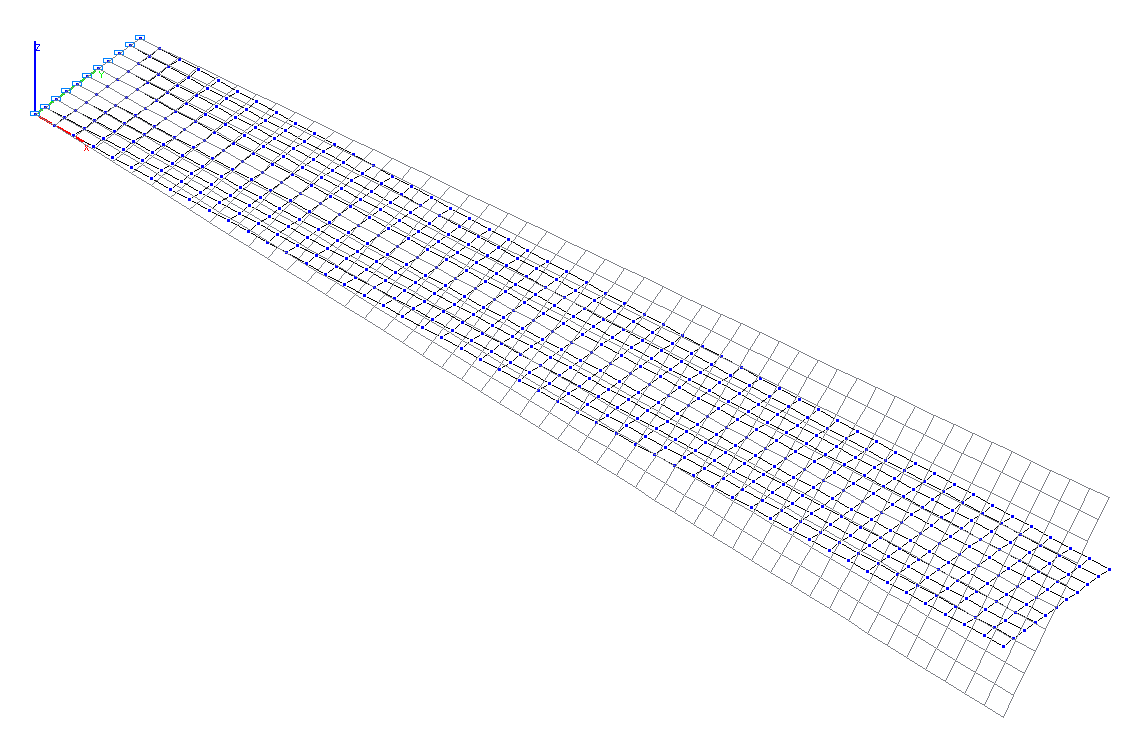Torsion of a Rectangular Narrow Cantilever Plate by a Pair of Concentrated Forces
Objective: Determination of the strain state of a rectangular narrow cantilever plate subjected to a pair of transverse concentrated forces applied at the corners of its free edge.
Initial data file: SSLS27_v11.3.spr
Problem formulation: The rectangular narrow cantilever plate is subjected to a pair of transverse concentrated forces Fz (points B, C) applied in the corners of the free edge. Determine: the transverse displacement Z of the corner of the free edge of the plate (point С).
References: J. Robinson, Element evaluation. A set of assessment parts and standard tests, Proceeding of Finite Element Methods in the commercial environment, vol. 1, October 1978.
J.L. Batoz, M.B. Tahar, Evaluation of new quadrilateral thin plate boundary element, International Journal for numerical methods in engineering, vol. 18, Jon Wiley and Sons, 1982.
Initial data:
| E = 1.0·107 Pa | - elastic modulus, |
| ν = 0.25 | - Poisson’s ratio, |
| l = 1.0 m | - width of the cantilever plate, |
| L = 12.0 m | - length of the cantilever plate, |
| h = 0.05 m | - thickness of the plate, |
| Fz, = 1.0 N | - value of the transverse concentrated force. |
Finite element model: Design model – grade beam / plate, 500 plate elements of type 11. Boundary conditions are provided by imposing constraints in the directions of the degrees of freedom Z, UX, UY for the clamped edge (line AD). Number of nodes in the design model – 561.
Results in SCAD


Design model

Deformed model


Values of transverse displacements Z (m)
Comparison of solutions:
|
Parameter |
Theory |
SCAD |
Deviation, % |
|---|---|---|---|
|
Transverse displacement Z of the corner of the free edge of the plate (point C), m |
3.537∙10-2 |
3.530∙10-2 |
0.20 |
